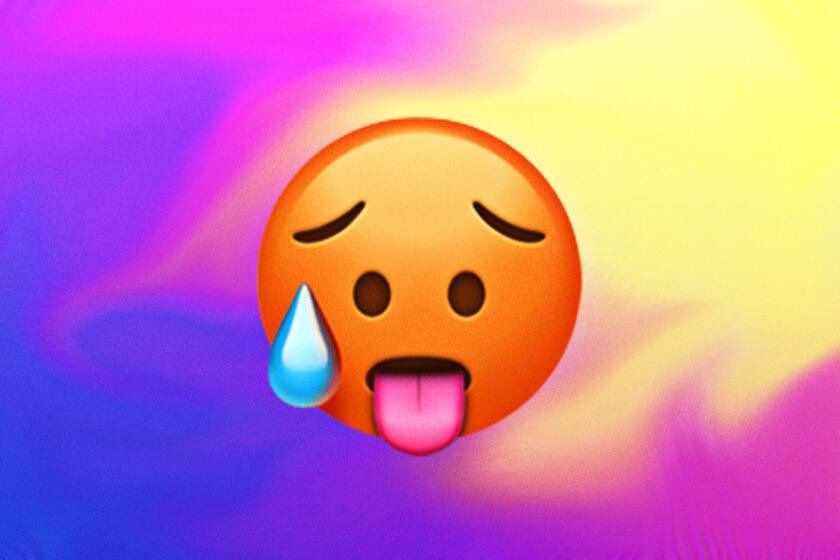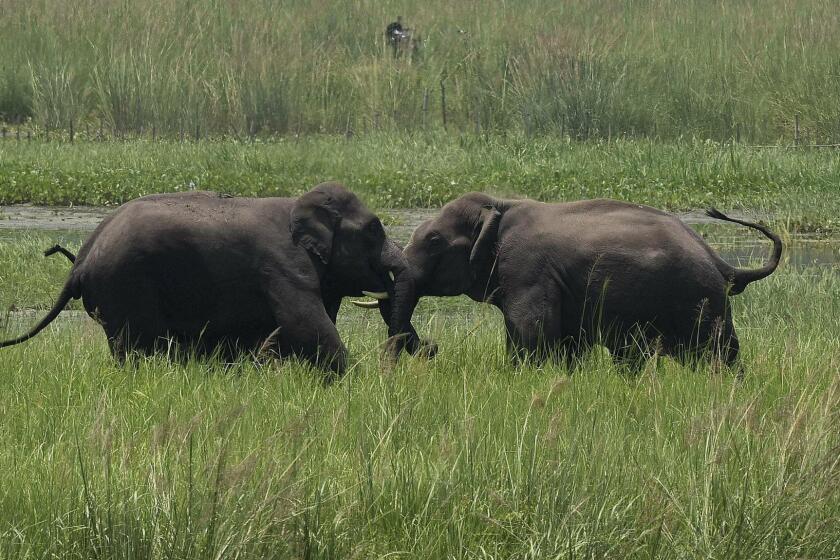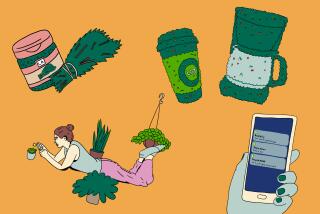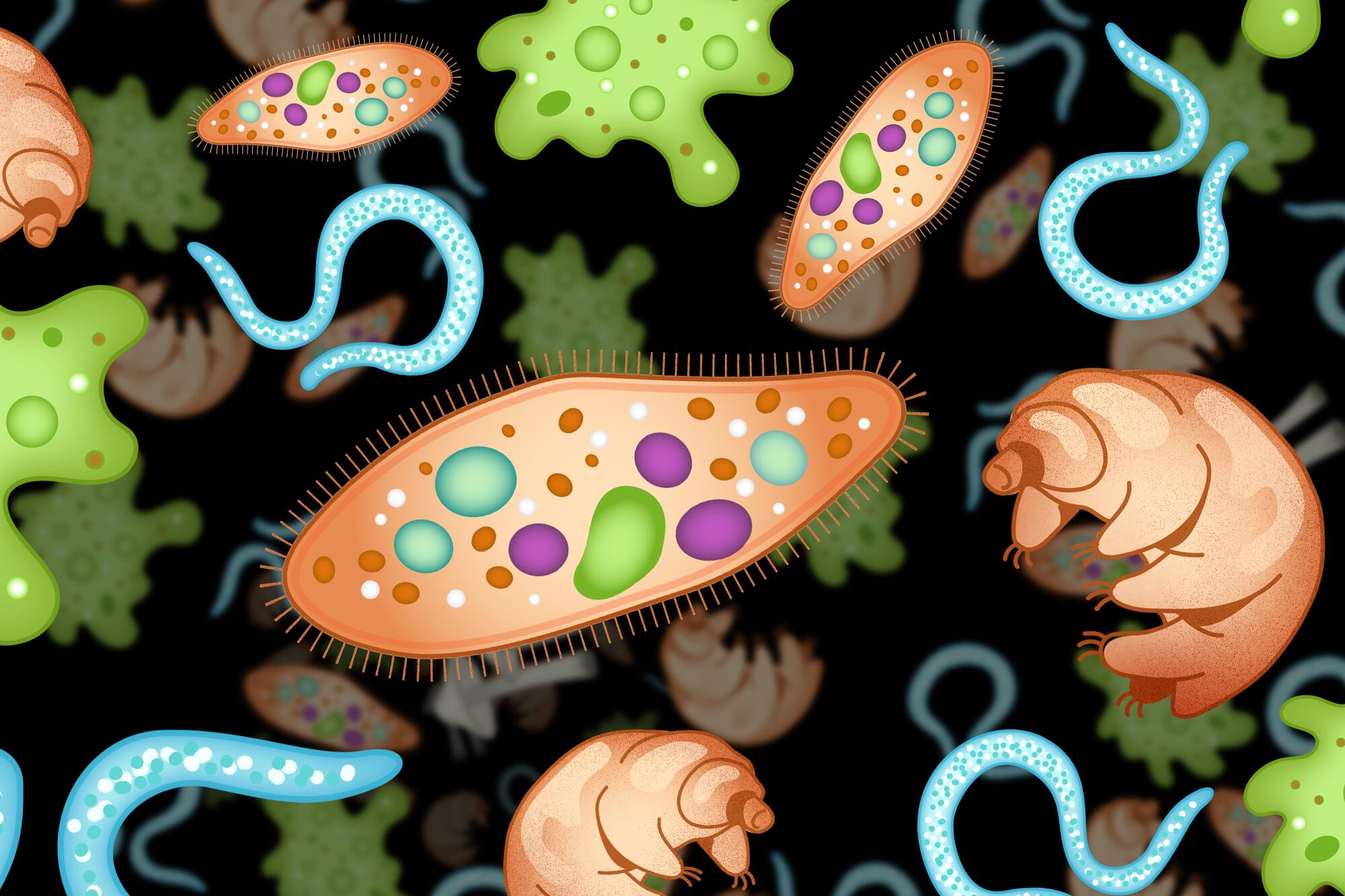
More emojis of plants, mollusks, flatworms, fungi and microorganisms could help spark new conversations about conservation and biodiversity, a new study argues.
- Share via
Earth has millions of fungi species, but the official emoji library has only one: Amanita muscaria, the red-capped, white-spotted mushroom found in fairy tale picture books and Super Mario Brothers.
A staggering 180,000 species of butterflies and moths flit about this planet, yet their lone emoji avatar is a generic blue butterfly that looks like a spring break tattoo.
There is a biodiversity crisis in our phones, according to a team of ecologists who have undertaken the most comprehensive survey to date on the flora and fauna of Emojipedia, the global directory of pictograms recognized by the international Unicode Standard.
Those little pictures power an enormous amount of global conversation. And when emoji biota are limited, the ecologists argue in a new paper, so is the scope of the natural world that we can talk about, advocate for and ultimately protect.
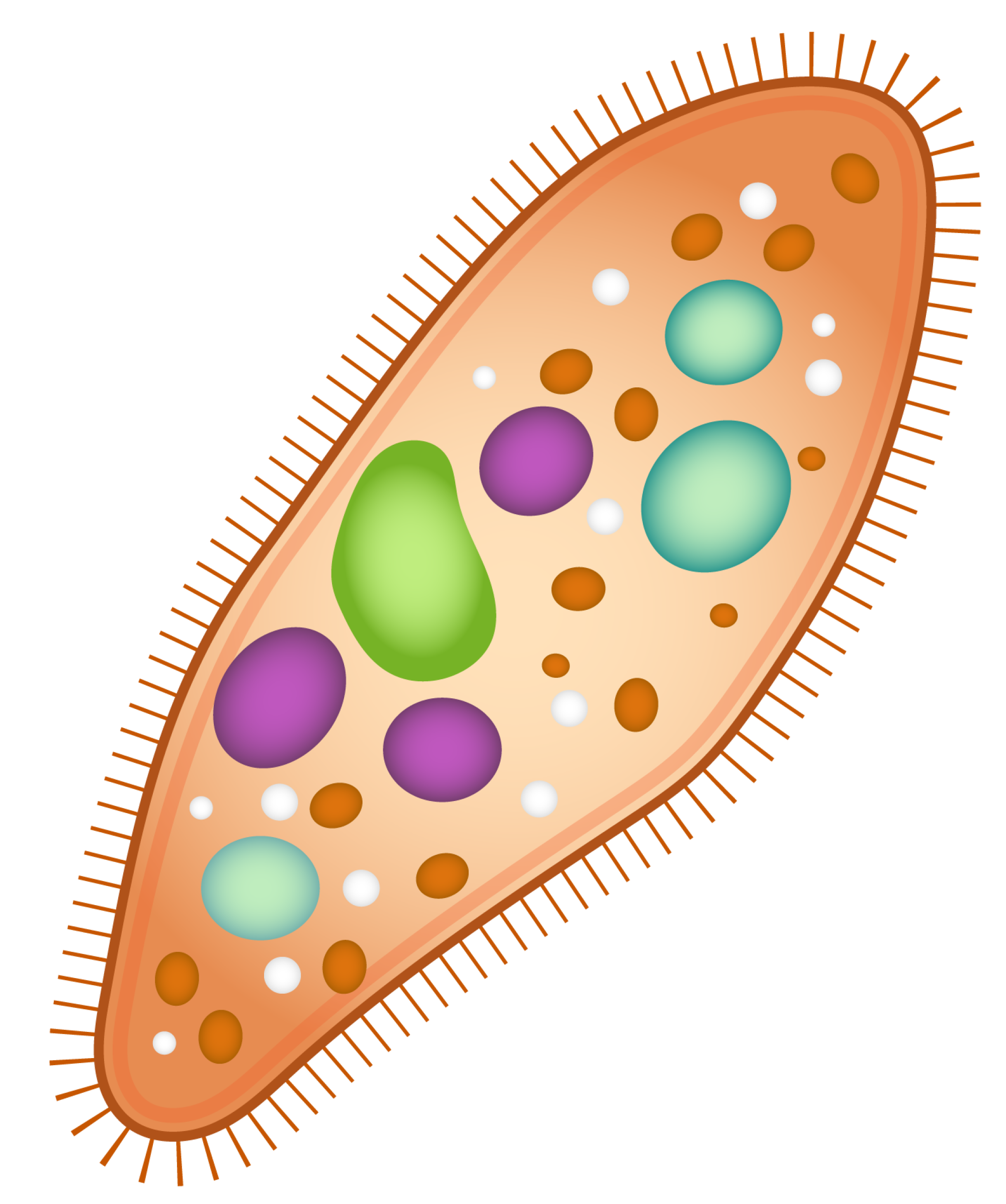
“The conservation of biodiversity can only progress with the participation and support of the society at large,” said co-author Stefano Mammola, an ecologist who focuses on subterranean biology. “You need effective communication.”
In other words, if the world speaks in emojis, emojis should reflect the world.
In their report published Monday in the journal iScience, the authors identify 112 distinct types of living organisms among the 214 images in the “Animals and Nature” section of Emojipedia. (Unlike Carl Linnaeus’ scientific classification system, emoji taxonomy is a fuzzy thing. “Animals and Nature” is an expansive category that includes the unicorn, a heart on fire, two snowmen and four different kinds of umbrellas.)
In the emoji lexicon, the planet’s tens of thousands of tree species are reduced to four measly symbols: a palm, a cactus, a nondescript deciduous and an evergreen. (A version decorated for Christmas appears under “Events and Celebrations” in the “Activity” section.)
The vast unicellular world gets a single green blob labeled “microbe.”
The emoji of our eternal pandemic, vaxxed, variant summer is the hot face.
In an encouraging sign for digital biodiversity, the number of animal types represented in Emojipedia doubled between 2015 and 2022. But while vertebrates make up only 5% of known animal species in the real animal kingdom, they account for 76% of the 92 animals in the emoji biosphere.
Arthropods are 85% of real-life animal species (including all insects and spiders), but only 16% of emoji animals. Molluscs, a richly diverse phylum with roughly 100,000 estimated species, have just four emojis (a squid, a snail, an octopus and an oyster). Cnidarians get two (a jellyfish and a tiny coral reef), and annelids have one (a worm). Flatworms and roundworms, two phyla with more than 20,000 species each, have no emoji at all.
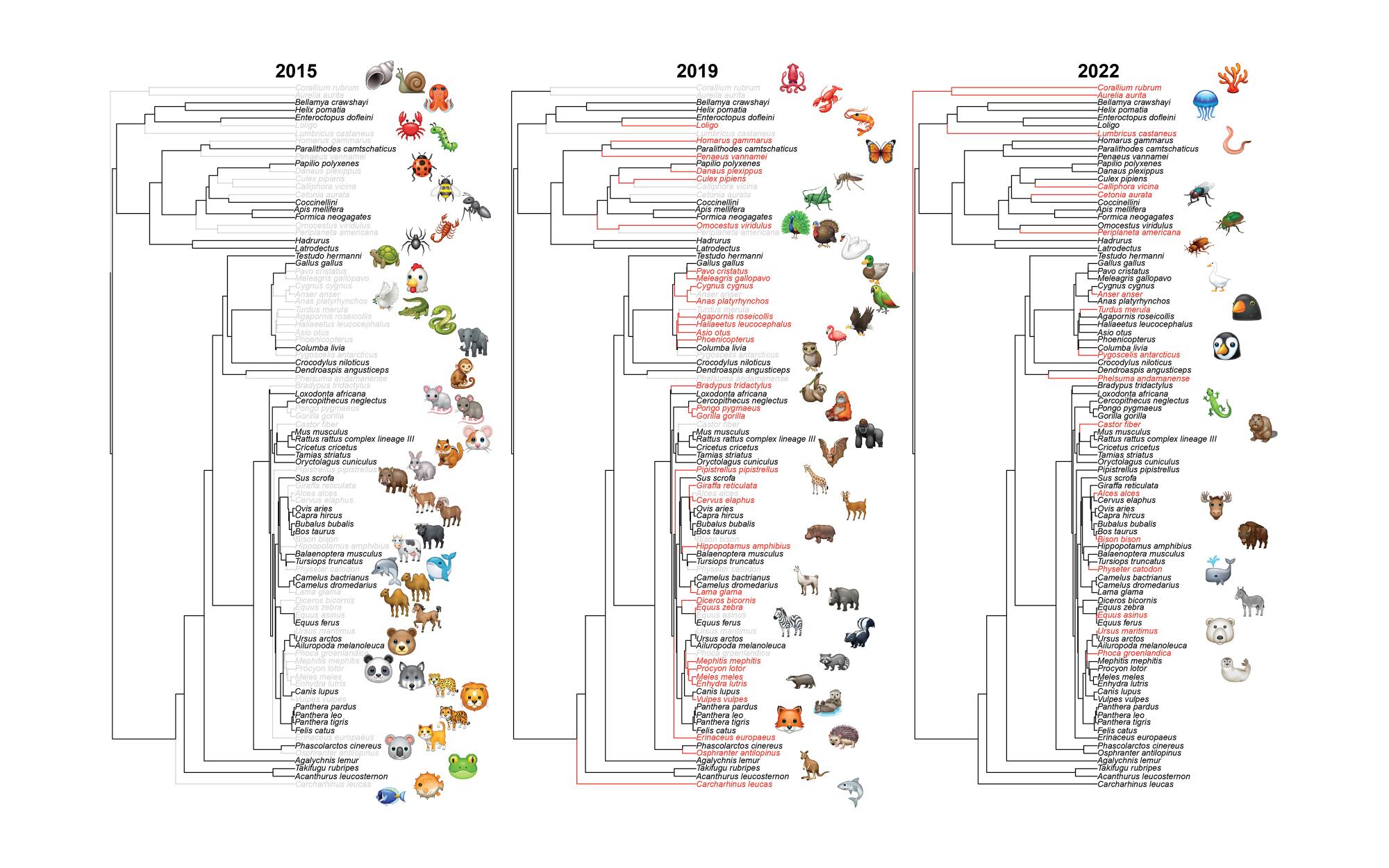
The paper’s authors are three Italian biologists and ecologists who typically focus on real-world specimens. The idea for an emoji wildlife census was “completely serendipitous,” Mammola said.
“We met at a conference and we were chatting with a colleague working on aquatic fungi,” he explained via email. “She was lamenting that when she had to write about model organisms on social media, she lacked a suitable emoji to depict them.”
In the midst of a real-life extinction crisis, a dearth of emojis may not seem that big a deal. Humans have after all found wonderfully inventive ways to deploy this limited number of icons. The humble goat can signify superlative greatness. A turtle could suggest lethargy. An eggplant or a peach may be elegant shorthand for the complexities of human desire.
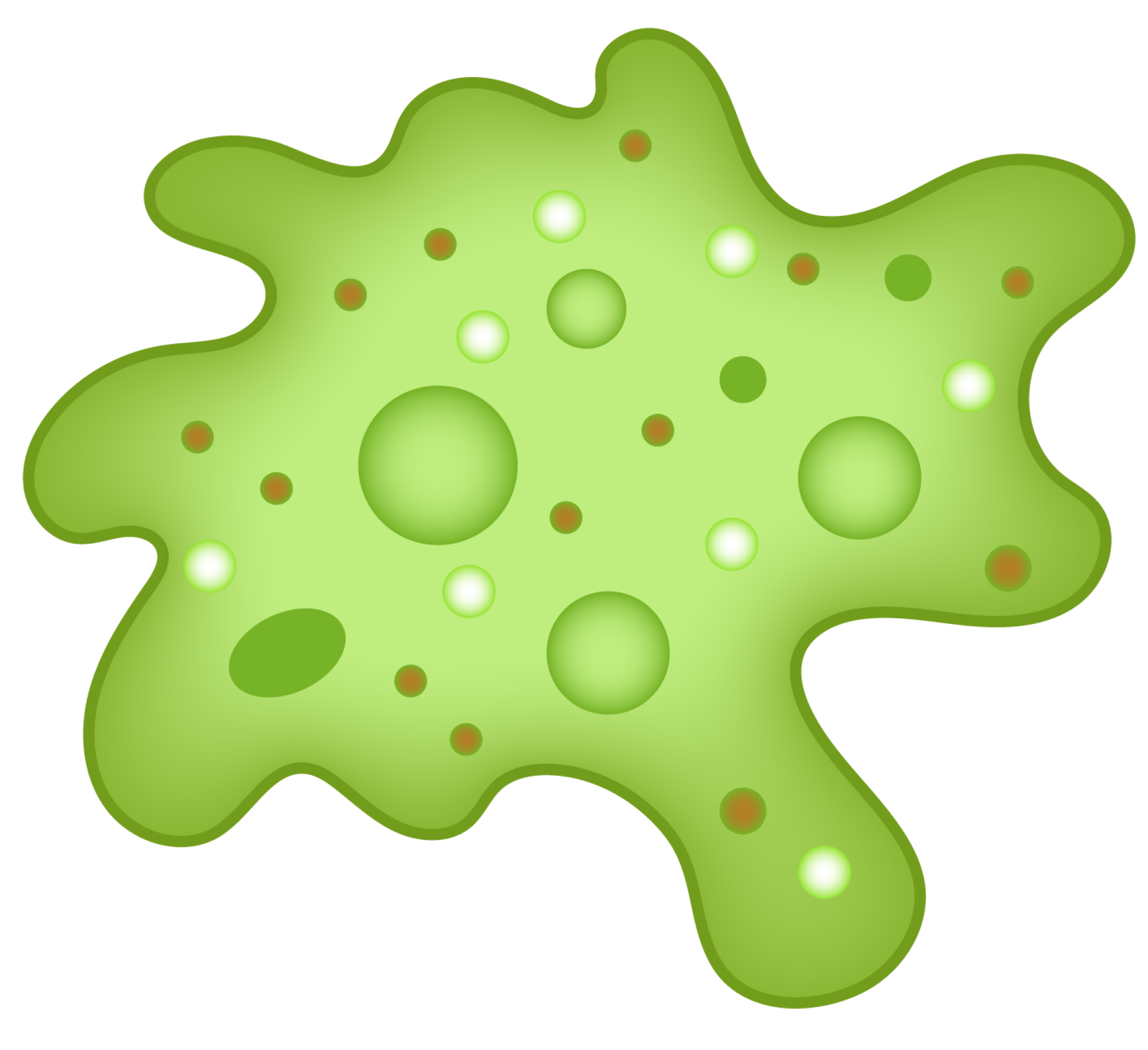
Given emojis’ ubiquity, their mere presence can drive conversations.
“Even if a tiny fraction of users adopt a new emoji, the visibility and number of eyeballs being exposed to it are undeniable,” said Florie Hutchinson, a San Francisco-based media strategist who led a successful campaign in 2018 to add the first women’s shoe to the emoji library that was not a stiletto heel.
Yet propagating new emojis is no small feat, as University of Rochester computational chemist Andrew White discovered when he attempted to get a representation of a protein added to the official roster.
“Much of the discussion of the pandemic (e.g., the infamous “spike protein”) and the latest drug discovery advances (e.g., CRISPR gene editing, biologic drugs) are based on proteins, but we have no emoji for them,” White said via email. “Emojis also help in English, where words like protein can mean the macronutrient from food or the concept from microbiology.”
Proposals for new emojis are reviewed by the Unicode Consortium, an international software standards body that functions sort of like the emoji Hague.
Nature is in more trouble now than at any other time in human history, with extinction looming over 1 million species of plants and animals, scientists said Monday.
Anyone can submit a proposed icon to the Unicode Emoji Subcommittee, which evaluates nominees based on appearance (is it still legible at small size?), originality (does an existing emoji already convey the same meaning?) and the likelihood of wide-scale adoption.
Some years the committee approves hundreds of new emojis. In others, just a few dozen get the green light. Successful applicants are unveiled to the world every July 17 on World Emoji Day.

White’s helix-inspired protein didn’t make this year’s cut, but unsuccessful applicants can resubmit after two years.
“The main barrier to emoji inclusion is showing that the concept is popular enough,” White said. “Unfortunately, that means science concepts have to compete with concepts like breakfast waffles or a moose.”
There’s another powerful argument for expanding the emoji library to include science-themed topics, Hutchinson said: Kids love them, and they provide an easy and accessible way to introduce new themes.
When Hutchinson mentioned the new push for nature-themed emojis to her daughter, the 10-year-old asked why the only mushroom icon available was a poisonous one (charming though it looks, Amanita muscaria can kill you if you eat too much). That led to a discussion of other fantastic fungi like baker’s yeast, Hutchinson said.
“If the introduction of new biodiverse emoji leads to conversations among intellectually curious minds, then it’s an effective conduit for future change makers,” she said.

